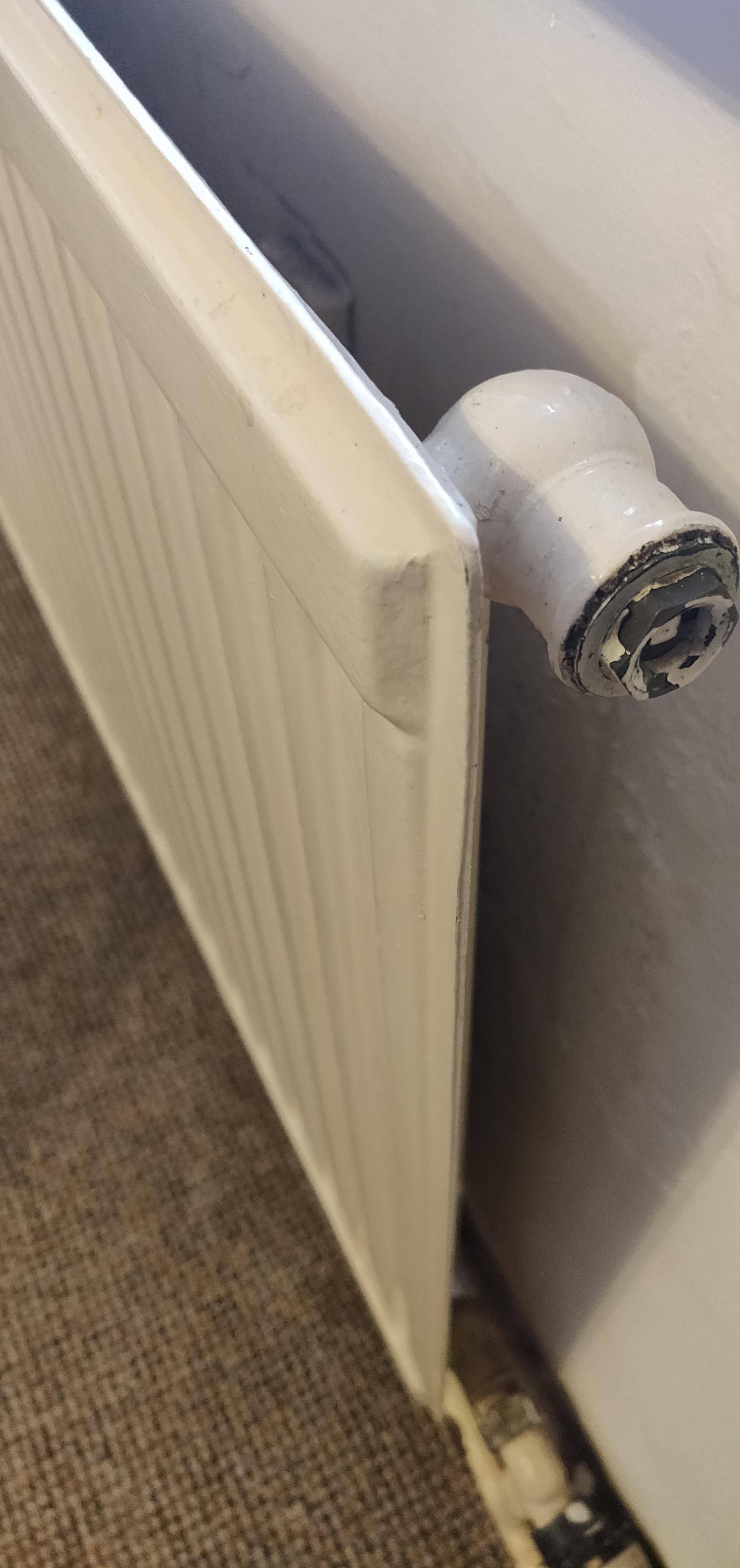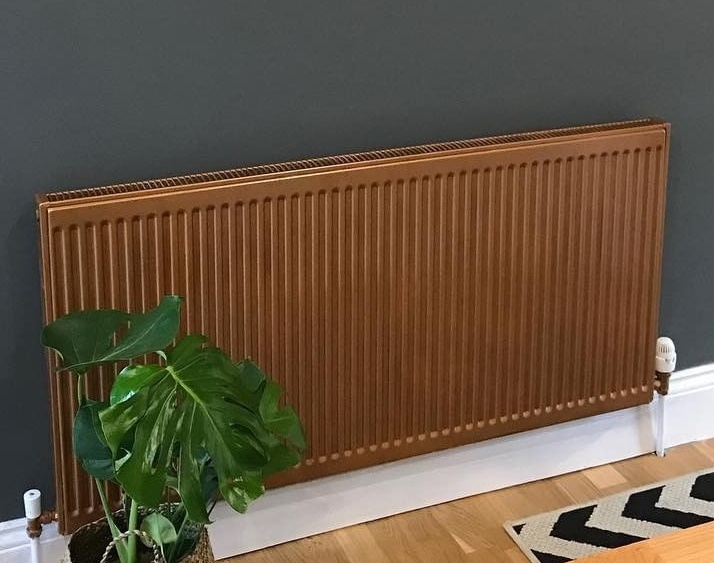For an easier job, I would not go to the trouble of stripping the paint back to the metal, unless your radiator is in poor or rusty condition. In which case it might be more economical to replace it.
You can lightly abrade the existing topcoat with P120 or P180 grit sandpaper to de-gloss the surface and provide a key for the new paint to stick to. Try not to go down to the metal. Remove all the sanding dust with a vacuum or damp cloth. You can then apply the paint.
If there are any peeling or rough spots then lightly sand out those areas until you get back to solid smooth paint. If you reach the metal, then you will need to lightly apply some metal primer just on those spots. Use white spray primer to match the existing paint.
Spraying your top coat gives the smoothest finish as long as you are careful not to get the surface too wet on each coat and make it drip.
You can leave your radiator on the wall during painting. Remove it if you want to paint the inaccessible areas on the back or otherwise work in an area less sensitive to overspray.
Make sure your paint is suitable for radiators. Some paints can soften when they get warm.
Use the same technique for your pipes if you like, but be very careful with the sanding if they are made of plastic. If the fittings/valves are bright and shiny then I would probably leave them alone, otherwise paint them if you wish.


